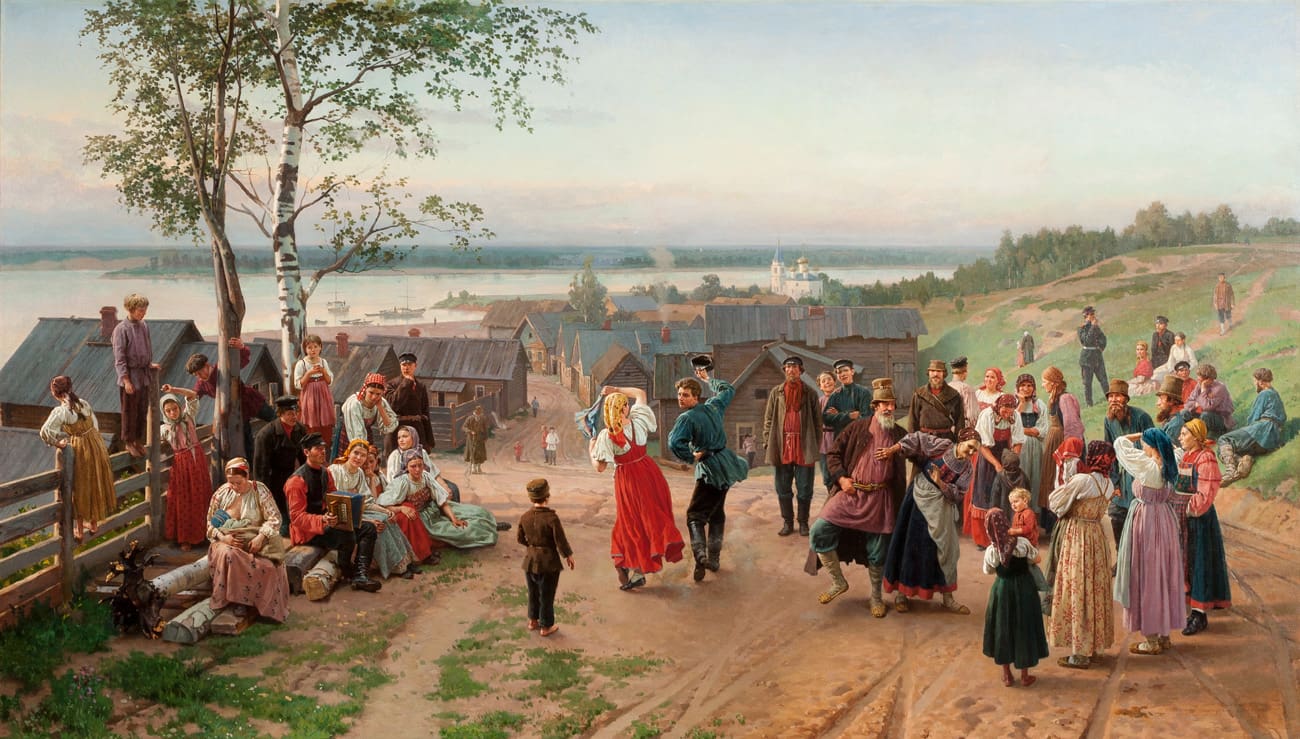You need to be bold to open a museum. And to fill it with Russian art — especially right in the middle of the North — takes vision. But Minnesota entrepreneur Raymond E. Johnson is a collector’s collector, in constant search of the next great work of art.
“It’s addictive,” he says. “I remember the very first painting we bought. I received so much pleasure from looking at that piece every day. It also didn’t hurt that it turned out to be a marvelous investment.”
That work, a moody landscape, was purchased 45 years ago. He paid roughly $3,000 and over the years has been offered 10 times that amount. It’s not for sale. It has, however, led to several other acquisitions.
Today, his burgeoning assortment measures in the thousands; it’s the largest privately owned collection of Russian realist paintings outside the former Soviet Union. And it was the impetus for opening the Museum of Russian Art in Minneapolis some 15 years ago.
In business and in art, Johnson does his homework. He had a hunch that Soviet art was underappreciated in the market, so he did extensive research, hiring 12 art historians from various parts of Russia. They identified a handful of notable artists, and that list formed the basis of Johnson’s early buying efforts. He says this initial input allowed the collection to take off. It also led to countless trips to artists’ studios, where he forged deep, meaningful bonds.
“Take, for example, Geli Korzhev,” he notes. “I know what his studio smelled like, how the light filtered through the grimy
Moscow windows and how carefully his still-life objects were arranged because I visited more than 60 times. Knowing an artist personally changes my relationship with their work. I love to stand at arm’s length from my paintings and imagine the artist having done the same.”
That kind of curiosity has served Johnson well. As a boy in Iowa, he began making archery arrows, and by age 17, he was selling them. He later invested in real estate, oil and a manufacturing company that produced wooden duck decoys. Soon they were being sold as home décor in some 75 stores Johnson owned across the country. But it was when he purchased the Overland Gallery in Scottsdale, Arizona, that his passion for collecting really took hold.
His devotion to Soviet art hasn’t gone unnoticed. He was named an honorary consul of the Russian Federation and in 2006 received the Order of Friendship medal from President Vladimir Putin, the highest award given to a non-Russian. During a time of tense Russian–American relations, Johnson serves as a sort of art liaison, loaning his works to museums, universities and other cultural institutions around the world.
“The arts have been one of the very few channels of communication to remain open between the United States and Russia throughout a changing political climate,” he says. “We have been very careful to remain apolitical.”
A modest man, he doesn’t consider himself an expert but instead a novice with a really good eye and a great deal of luck. Still, a few of his acquisitions stand out, and one work in particular carries special meaning.
“‘Sunday in the Village’ by Nikolai Dmitriev-Orenburgsky has hung behind my desk for as long as I can remember,” Johnson notes. “Each of the villagers is so vividly and intricately painted that they seem capable of dancing straight off the canvas.”
That work was on view at the 1939 New York World’s Fair. And Johnson’s father, who died when the collector was just an infant, attended that event. “Being a dairy farmer, he probably didn’t spend a lot of time at a Russian exhibition,” he surmises. “But over the years I have convinced myself that he saw it. And if he did, it would be the only painting in the entire collection that both my Dad and I could have seen.”
It’s this very kinship with art — and the supreme desire to share it with others — that keeps Johnson moving forward. His Museum of Russian Art is forever evolving, expanding its focus to photography, porcelain, printmaking, textiles and other media. The institution’s lively and varied exhibitions have become a mainstay of the thriving Twin Cities arts scene.
Read this article as it appears in the magazine.




